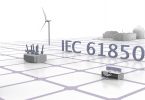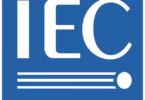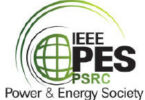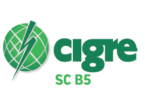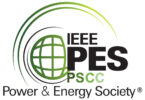by Christoph Brunner, it4power, Switzerland
With IEC TR 61850-7-5 and IEC TR 61850-7-500, modeling guidelines were published a while ago to explain some of the concepts of IEC 61850 beyond the specification in the core documents of the standard. Another technical report, IEC TR 61850-10-3 explains concepts for functional testing. All those documents help the users to better understand and interpret the standard and as such improve interoperability. However, they were published a while ago and, in the meantime, there is new material to be added. Therefore, we started the process to revise those documents.
For the parts 7-5 and 7-500, the revised documents will be issued as Technical Specifications (TS) instead of Technical Reports. According to the latest IEC directives, a technical report cannot contain recommendations. That was the reason for changing to a technical specification. The change has been approved by the national committees. In the next step, new work item proposals will be circulated with an attached first draft of the new documents.
Besides minor corrections to the existing material, we include some new topics into those TS. For part 7-5, we will add a new clause explaining the Local/Remote concept in more detail. It discusses a hierarchical concept of selecting local control based on a logical device hierarchy. In addition to this new clause, there are also some clarifications provided on quality propagation.
In part 7-500, clarifications to the usage of the data object SwModKey, which allows to perform control without interlocking check, have been added. Beyond that, some new topics will be added. The first is the explanation, how to model a withdrawable circuit breaker. As part of that, an extension to the data model of the LN XSWI will be proposed. A second topic will address modeling for fault related measurements by introducing a new logical node RFMX. Finally, we will also introduce the concept of topology modeling. Making the topology available in a data model will enable new applications.
Some of the concepts described in part 7-5 and part 7-500 include proposals to extend the existing models of IEC 61850. As those will be later directly integrated into the respective core parts, the modeling of those extensions will not be included in the technical specification. Using the concept of the transitional namespaces as we have done in the past with the technical reports of the IEC 61850-90-xx series (now PAS instead of TR), there will be a dedicated part IEC PAS 61850-90-25, that will formally describe those model extensions.
The IEC TR 61850-10-3 is also planned to undergo a major revision. We plan to add recommendations on IED and system design for testability and support for automated testing. Related to that is the recommendation to model test equipment as an IED and include it in the system design. That may require extensions of the service capabilities described in part 6 of the standard.
We will also describe how to use test references, that already exist in the data model for inputs, for functional testing. Another element to be added is functional testing and key management. This includes describing how test equipment needs to participate in a key management system as well as discussing how to test a key management system. Further topics include use cases and scenarios for negative testing, support of time synchronization by test equipment or autoconfiguration of a test system based on the SCD file.
In addition, we will analyze the impact of some new aspects of IEC 61850 on functional testing. One of those is the introduction of cyber security standards like role-based access and key management. Another topic is the trend to centralization and virtualization. Testing may create requirements towards centralization and virtualization, to keep the systems testable. Remote testing is another topic to be addressed. This will become more important as we are as well looking with IEC TS 61850-80-7 into remote management of IEDs. With IEC TR 61850-90-29 we address modelling of physical inputs and outputs – again, this provides more opportunities for testing and automatic configuration of the test system.
Finally, SCL namespace extensions introduced with IEC TR 61850-90-30 and IEC TR 61850-7-6 supporting machine readable specification with signal flow will allow for testing a design in an early stage. Including the signal flow specification in an SCL file may as well support white box testing required especially in a centralized protection scheme.
The ongoing revisions to the IEC 61850 standards aim to enhance modeling guidelines and functional testing practices by incorporating new concepts and addressing minor corrections to existing material. The transition from Technical Reports to Technical Specifications enables the inclusion of recommendations, fostering increased clarity and interoperability. New additions, such as enhanced explanations of local control hierarchies, fault-related measurements, topology modeling, and the integration of test equipment into the system design, reflect the dynamic evolution of the standards. Moreover, the impact of emerging trends like cybersecurity, centralization, virtualization, and remote testing underscores the need for adaptable testing frameworks. These updates collectively pave the way for improved automated testing, early-stage design validation, and expanded applications in system design and management.
Biography:

Christoph Brunner is the President of his own independent consulting company it4power LLC based in Switzerland. He has over 40 years of experience with knowledge across several areas within the Utility Industry and of technologies from the Automation Industry. He has worked as a project manager at ABB Switzerland Ltd in the area of Power Technology Products in Zurich / Switzerland where he was responsible for the process close communication architecture of the automation system. He is Convener of WG 10 of the IEC TC57 and is a member of WG 17, 18 and 19 of IEC TC 57. He is member of IEEE-PES and IEEE-SA. He is an IEEE Fellow and is active in several working groups of the IEEE-PSRC and a member of the PSRC main committee and the subcommittee H. He is advisor to the board of the UCA international users’ group.




